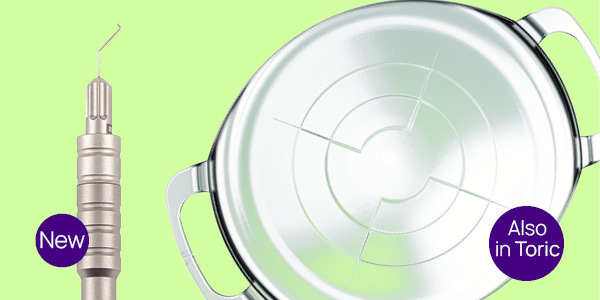1. Figure out the patient’s objectives as regards to their vision
If your patient does not request independence from glasses and does not mind wearing them, then this patient should not be considered for a Presbyopic IOL implant. The patient will benefit more from other options, such as the Precizon Monofocal IOL.
2. It can be helpful to remind your patient of his or her age
As people get older, changes take place in the eyes as in the rest of the body. Explain that their vision will be better after cataract surgery, but an IOL is not as perfect as the patient’s natural crystalline lens at the age of 18.
3. Communicate the necessity to choose
The choice is either sharp vision in far distance, whilst using glasses for intermediate and near vision or full vision from near to infinity with less dependence on glasses but possible slight visual disturbances in low light conditions.
4. Explain the surgical risks
Warning each patient of the inherent risks of surgery is an important part of the informed consent process.
Once you’ve determined your patient is a possible candidate for the Precizon Presbyopia IOL, it is important to balance expectations. Compare what life will be like when the patient chooses a presbyopia correcting IOL implant for surgery with life after a standard monofocal implant.
5. Explain what the visual function will be in case of a standard monofocal IOL
Educate your patient about vision at one specific distance and lack of focus on close objects with a monofocal IOL. Help patients understand that this is what a monofocal will offer.
6. Describe the difference between standard monofocal lenses and the premium presbyopia-correcting lenses
If your patient chooses a standard monofocal lens, she or he will be reaching for glasses every time they perform near-distance tasks. If your patient chooses a premium presbyopic lens, she or he will be less dependent on glasses. Your patients are more likely to see well at near or in-between distances.
7. Inform the patient of the potential of slight visual disturbances with presbyopia-correcting lenses 1)
It is important that patients know about the possibility of post-operative glare or halos2). Most patients already experienced pre-operative halos and glare from the cataracts. People may also experience challenges in adapting to the new technology. Over time, most people grow accustomed to these disturbances and stop noticing them3).
8. What is the biggest risk?
Your patient may not be happy with her or his vision with the premium presbyopic lens in place. If it is disturbing your patient to a great extent, the procedure can potentially be reversed. The premium IOL can be replaced by a standard lens. Fortunately this is a rare event.
9. Remind patients of the activities they can enjoy with their reduced reliance on glasses
Include any work activities, sports, hobbies and outdoor activities you know your patient enjoys.
Characteristics to consider when selecting patients for Presbyopic IOLs
Even before selecting the appropriate IOL and target refraction, the most important factor to successful cataract surgery is getting to know the patient and achieve accurate pre-operative diagnostics. Read more about patient selection in our previous blog about Personality & Vision Goals and Pre-op Measurements.
Check out the complete Special on Patient Selection & Counseling in PDF »




